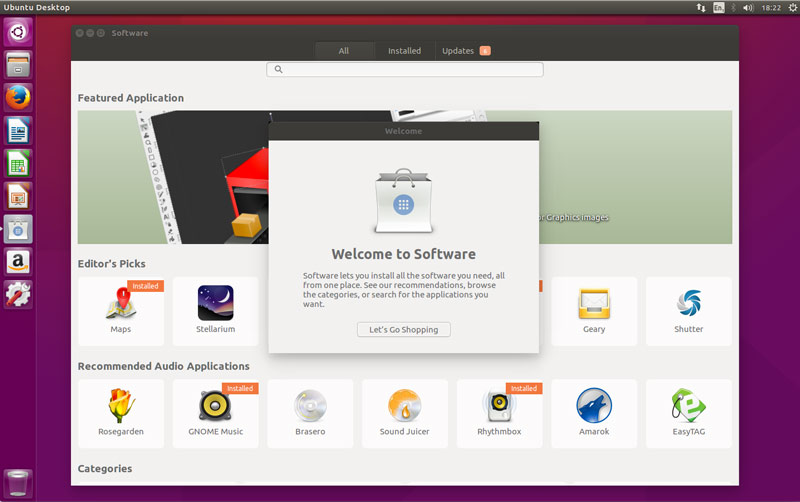Software For Ubuntu

This is a living specification for how Ubuntu should present, download, and install software updates on PC and phone. It is part of Ubuntu’s overall. Our presentation of software updates should carefully balance promptness against interruption, and automation against informed consent, to maximize the prompt installation of updates across the millions of devices on which Ubuntu is installed.
How you can help This specification includes many small changes and enhancements to the current update behavior, but they can be implemented in any order. Grab the code ( or ) and submit your own branch.
The “When checking for updates, check for:” menu should contain options for “All updates” (the default, -security + -updates + -backports), “Security and recommended updates” ( -security + -updates), and “Security updates only” ( -security) (bug ). If your current update config does not match one of those three options (for example, if you have opted in to -proposed), there should be a fourth, checked, option: “Custom” (bug ), and this option should persist until you close System Settings. (UI for configuring -proposed should be.) The “Automatically check for updates:” menu should contain options for “Daily” (the default), “Every two days”, “Weekly”, “Every two weeks”, a separator, and “Never”. The “Download updates automatically:” menu should contain options for “None”, “Security updates”, and “All updates” (bug ). The “When there are security updates:” menu should contain options “Display immediately” (the default) and “Install automatically”.
Ubuntu Software Center is an open source piece of software specifically designed as the default package manager for the world's most popular free operating. Apr 13, 2012 Download Ubuntu Software Center 5.2. Install and uninstall programs from your Ubuntu system.  Ubuntu Software Center is a free application created by Canonical that allows you to manage all of the programs installed on your system and to install new ones. The function of USC is based mostly on its search.
Ubuntu Software Center is a free application created by Canonical that allows you to manage all of the programs installed on your system and to install new ones. The function of USC is based mostly on its search.
The “When there are other updates:” menu should contain options “Display immediately”, “Display weekly” (the default), and “Display every two weeks”. The “Notify me of a new Ubuntu version:” menu should contain options “For any new version” (the default for a non-LTS, replacing “Normal releases”), “For long-term support versions” (the default for an LTS, replacing “Long term support releases only”), and “Never”, in that order. Idea: Make this more predictable by letting you specify which day of the week it opens. Whenever an update is downloaded and ready to install, or a background update download has failed repeatedly, or “Download future updates automatically” is set to “Never” and an update is available for download: • Wherever the System Settings icon appears, it should have a badge with the number of updates available (bug ). • On the System Settings main screen, “Updates” should have the same badge (bug ). • Inside System Settings, the should have an “Updates available” or “Update problem” item, with the number of updates available as the summary value.
Presenting an individual update How each update should be presented depends on its current state (before, during, or after installation), and whether it is a system or app update. In general, it includes an icon, title ellipsized in the middle if necessary (bug ), action button, “Version” and version number, and size to 1 decimal place in the most appropriate unit (e.g. If it is a system update, its icon should be the Ubuntu logo, and its title should be “Ubuntu”. If it is an app update, its title should be the name of the app, ellipsized in the middle if necessary. Download rom station. State System update App update Available Downloading automatically Downloading manually Download failed Downloaded Installing Installation failed Previous When an update completes successfully, it should slide from the list of available updates down to the “Recent updates” section (creating that section if necessary). A recent update should have an “Open” button for an app, not for the system.